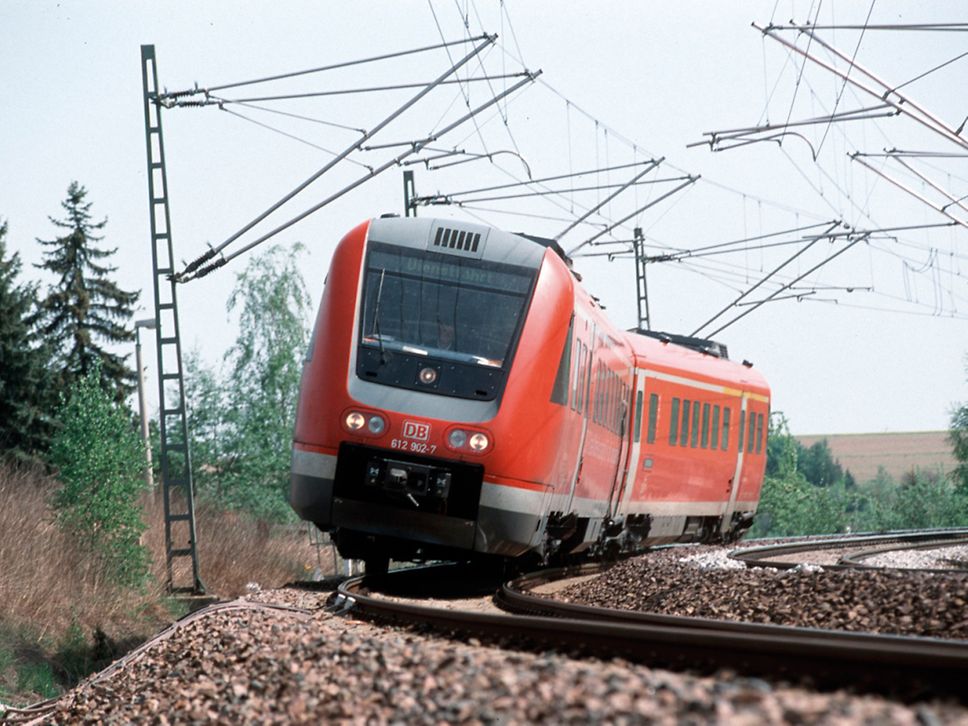Article: Running characteristics test laboratory
Vehicle reaction and contact geometry, vehicle dynamics testing
With approximately 45 staff and four working areas, this department is the most efficient in Europe and worldwide for dynamic and vibratory problems arising from the interaction between vehicles and track.
We specialise in planning, executing, analysing and assessing driving and vibration tests carried out on rail vehicles.
The tests are carried out in static and dynamic tests as well as stationary in the laboratory.
Accredited test procedures
- Our test laboratory in Minden is accredited by Deutsche Akkreditierungsstelle GmbH (DAkkS) in the area of drive mechanics for rail vehicles in accordance with DIN EN ISO/IEC 17025. See the appendix for the accreditation certificate.
- DB Systemtechnik is QMS certified to the ISO 9001 standard.
The detailed and latest list of activities/test procedures in the flexible scope of accreditation in the testing laboratory "Running characteristics" can be found in this PDF:
Our tests and test quantities
Details:
Static measurements, tests and test stands:
- Wheel profile examination
- Rail profile examination
- Wheel and rail profile development
- Concentricity measurement
- Wheel diameter measurement
- Measurement of roll coefficient (roll angle determination)
- Measurement of veering-out resistance (veering-out resistance test stand)
- Verification of safety against derailment of small wheels in the non-guided area of curved track intersections
- Determination of torsional rigidity (torsion test stand)
- Determination of wheel contact forces and wheel force tolerances on the torsion test stand (vehicle weighing)
- Verification of safety against derailment on twisted track
- Determination of the transverse and longitudinal rigidity characteristic curves
- and play/clearance of vehicles
- Determination of car body rigidity
- Determination of tracking and wheel contact forces
- in a 150 m bend (curved test track)
- Contact angle measurement
- Determination of tracking and wheel contact forces
- in a 190 m switch curve
On-track running tests
- Continuous track geometry measurement
- Dynamics testing of rail vehicles (approval analyses)
- Optimisation tests (component and componentry tests)
- Basic vibration tests of rail vehicles
- Comfort tests on rail vehicles used for passenger transport
- Vehicle response measurements for track clearance and inspection (vehicle/vehicle interaction)
Our special measuring vehicles (selection)
NeiTech measurement train (VT 612)

Measurement train for vehicle response measurements and component trial testing
| Train configuration: | The train comprises the 612 901-8 and 612 902-6 vehicles |
|---|---|
Operation: | DB AG network and networks of other European railways. |
| Use: |
|
| Measured quantities: | Wheel/rail forces, acceleration at the bogie and in the car body, contact forces between pantograph and overhead line, track geometry and rail cross-section values. |
Our stationary testing facilities:
Mor informations here!
